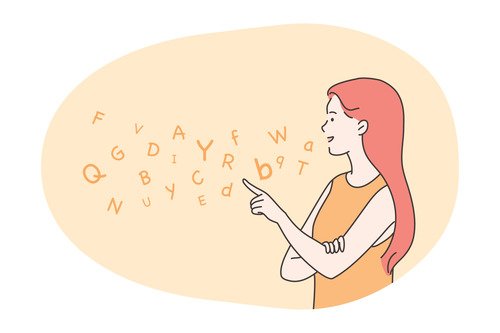Table of Contents
Both IELTS writing tasks have the exact requirements and are scored similarly. However, the IELTS writing task 2 has 250 words, which makes it twice as important as task 1. Task 1 has a word limit of 150 words. You can get a better overall score on the IELTS writing task 2 if you learn how to use connectors and link words correctly. By establishing connectors for IELTS between ideas and paragraphs you can construct sentences and establish relationships between text sections. Linking words are an essential grammatical tool for making essays easy to understand. Candidates using connectors for IELTS can present their arguments more thoroughly and demonstrate a higher knowledge and vocabulary.
Writing task 1
For the IELTS writing task 1, candidates are often provided with visual materials to use as prompts. They have to prepare a report of at least 150 words long. While the specific word count depends on the data presented. In this part of the exam, using connectors for IELTS writing task 1 can help you set up the change from one visual depiction to another, examining and contrasting the most salient aspects of the charts and emphasizing vital visual elements.
Writing task 2

Applicants should be aware that linking phrases have limitations. In addition, linkers in IELTS speaking are distinct from IELTS writing connectors. The second part of the exam consists of an essay that the candidate must compose in response to a question or statement. Using connectors for IELTS can help make a connection between paragraphs. You can put forward an argument by using specifics and explanations, and define the conditions and repercussions of several hypothetical situations.
How to use connectors efficiently?
It is essential to know how to use connectors for IELTS for the speaking test. Most of the time, a connector goes at the beginning of a sentence, but many also go in the middle. Connectors are a great way to show your English skills on the IELTS speaking test. Even complicated sentences can be written transparently by using connectors.
It is essential to know that linking words, also called connecting words, have their limits. The way linking words are used in IELTS writing is very different from how they are used in IELTS speaking. Connectors and linkers for IELTS connect ideas after a comma and, most of the time, after conjunctions. Keep in mind that you don’t want the examiner to think that you tried to force the linking words into your answer.
Keep the following in mind when choosing and using linking words for the IELTS –
- Don’t pick favorites
Maybe there’s a particular word or phrase that you always use when you talk or write. No matter how well it works, you won’t get better grades. Get ready for the IELTS by making it a habit to use a variety of linkers. You can expect to improve using transitional words if you keep testing and highlighting.
- Try not to overuse them
One of the most common mistakes students make on the IELTS is using linkers. Don’t put too many joins in. Connectors make sentences sound awkward and needy when they are used too much. Because of this, the first advice is only to use these terms when you have to. If it helps compile a list of connectors for IELTS that best prove your point
- Pick the suitable one
As was already said, there are hundreds or even thousands of connectors for IELTS. This means connecting your ideas with the right words and phrases. Choose appropriate junctions. In this way, many terms used to connect ideas mean the same thing. Because of this, IELTS speakers need to choose the best connectors.
How often to use linking words?

An IELTS essay with too many transitional words can confuse the reader. Candidates should smartly use the IELTS task 1 and 2 connectors throughout the essay. Using too many linkers might make it hard for the reader to understand how to move from one idea to the next. That can make the student’s grades go down a lot. Linking words may not mean much on their own, but they are essential to the passage’s overall meaning.
Still, if the candidate puts them in a familiar setting, they might be able to come up with a compelling message that will impress the examiner. So, if you want to do well on this part of the IELTS, you must know the IELTS essay linking terms very well. It’s not easy to reach the goal of going to a prestigious university in a different country. The same can be said about how much it costs to go abroad.
Connectors in the speaking test
Using connectors for speaking IELTS tests will not only make your shorter answers sound more refined. It will also show off your vocabulary range and give you a few seconds to think of something else to say before the timer goes off after two minutes.
Using an appropriate number of connectors in IELTS speaking will help you earn bonus points for cohesion and fluency on the IELTS speaking test, which accounts for 25% of your total score. IELTS’s speaking segment will have you discuss a topic you’re provided on a task card after answering questions about yourself. For the IELTS speaking section, linkers have a dual purpose.
For starters, they will point your mind on the right path. Second, connecting words will buy you mental breathing room while also bridging concepts for the speaking cue card portion of the test.
Key takeaways
- Connectors for the IELTS help your ideas make sense. They will also allow you to introduce and explain your ideas to support your argument, which is what your essay will be about.
- Don’t rely too much on linking words, or it will make your paragraphs too hard to read.
- You should talk and write as much as possible to sound more natural and get better scores.
FAQs
Q1. How much do connectors impact my score?
Answer – You will not get high scores for using a range of connectors for IELTS if they do not fit the context. This is why reading the topic multiple times is essential.
Q2. What connectors to avoid?
Answer – Don’t use the word “like” to connect ideas in your writing tasks. This connector works much better in the speaking test.
Q3. What’s the difference between connectors used for writing and those used for speaking?
Answer – One major distinction between connectors for IELTS speaking and writing is the latter’s increased formality. Words such as “hereby” or “therefore” are good examples






